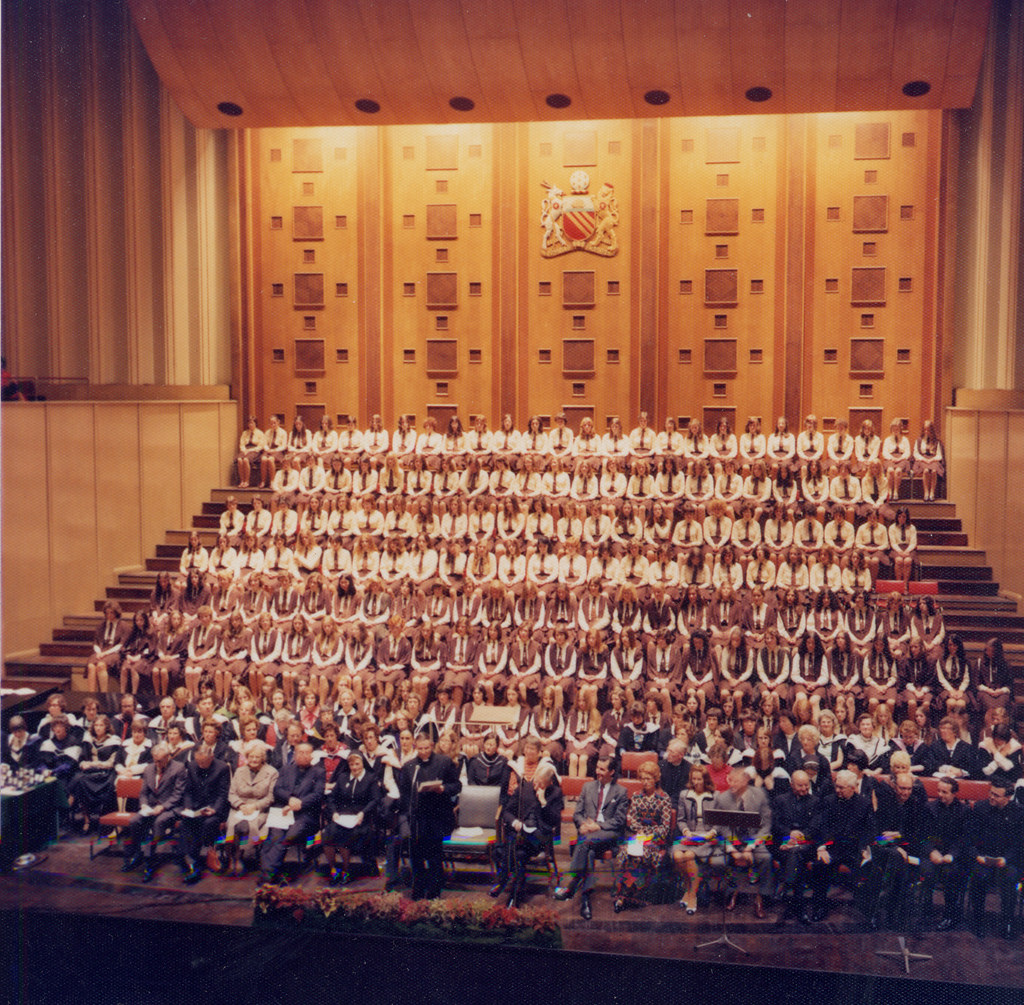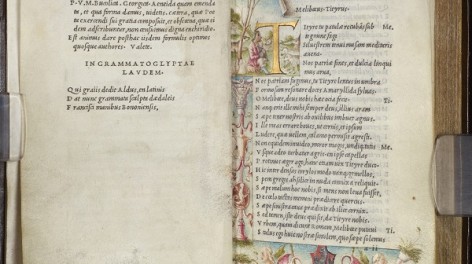We bought a return Metro ticket, intending to start at the Town Hall to see the Ford Maddox Brown Murals.
The tram terminated at Piccadilly, where we stood for a long time waiting for another to take us on to St Peter's Square.
After a bit of 'advice', we walked across Piccadilly 'Gardens' to another tram stop.
At the base of the Manchester 'Eye', we stopped to chat to a busker, who was playing a Kora. He'd recently graduated from Salford University and was playing a tune composed by his Tutor (who was standing behind him.)
After a long wait and quite a bit of mis-information, the penny dropped that there was neither tram nor bus going to the Town Hall and beyond, due to engineering works on the new Metro track. It was a short walk to St Peter's Square, but neither MWNN nor I fancied a repeat of Friday's marathon session that left us both exhausted.
We arrived at the Town Hall to find it closed, yet again. So closed, this time, that the front doors were locked. We were disappointed and getting a little tired. The decision was made to have an early lunch, so we set off in search of Sam's Chop House.
We found Tom's Chop House easily enough, on Cross Street. We'd been given directions to look for a left-hand road opposite Tom's, where we'd find Sam's. I tried asking two couples, neither of whom knew anything as they were foreign visitors.
We crossed the road and I stood looking gormlessly at my mobile's maps. A young man asked if we needed help (we'd had numerous locals do this over the weekend) and pointed us in the right direction. He was standing beside a new (to me) glass tower, bearing the name 'Cross Street Chapel'.
Once inside, Sam's, the little snug bar is dominated by a life-size bronze statue of L.S. Lowry.

He was a regular in the day's when Bert Knowles owned the restaurant.
We had a lovely, relaxed Sunday lunch in the restaurant section of the pub. We were so early that we had the place very much to ourselves.
After lunch, we decided to return to the hotel via Deansgate, where we knew we could board a bus that would take us to Shudehill. MWNN remembered that I'd told him about the time I worked in a baker's shop during the school summer holidays. I could walk to Manchester's Hidden Gem from there for the feast of the Assumption on 15th August. Generations of my ancestors were baptised there, it pre-dated the Catholic Cathedral, which was not built until twenty years after Catholic emancipation in 1829.
Despite the fact that he was tired, MWNN insisted we visited the church.
I'm glad he did, but it was a shock for me when we stepped into a brightly lit church, spotlights rendering the three altars uniformly white.
My memory of the church was one that was lit by candle-light and daylight from the cupola windows. The 'gem' of its nickname, I always thought, referred to the 'gem stones' set into the reredos of the three altars - the Pieta, the Main altar, and Our Lady of Manchester.
I set my digital camera up with no flash and took some close-ups of the main altar. This photo is a collage of a close up of the saints, with enlargements of some of the 'gems'.
The new lighting, no doubt, was installed to enhance the newly-installed (only ten years ago) Stations of the Cross. These are now tourist attractions in their own right, but for me, the beauty and peace of the church stemmed from a dark interior lit by the carved reredos 'gems' and candle-light.
Outside, in Mulberry Street, we took our bearings and made our way to Deansgate.
There, we passed this statue of Chopin, dedicated to the man himself and a gift of thePolish Community that has been part of Manchester's inhabitents for generations.
As we crossed Deansgate to find a bus-stop, I spotted the John Ryland's Library. MWNN had heard of this and wanted to take a peek inside. We were both very tired by now, so it would have to be a fleeting visit. There was a cafe in the modern entrance hall, where we knew we could sit and rest over a cup of tea when we needed.
The first gallery housed an exhibition of Merchants of print, from Venice to Manchester.
MWNN said the trip to Manchester was worth the visit to the Ryland's Library alone.
Many of the venues we saw and visited were made available to the population of Manchester by 19th century entrepeneurs.
For me, who felt like a tourist in the city in which I was born, it dawned on me what a privilege it was to grow up and be educated there. It reminded me of the visits I used to make to Central Library and the Science Museum, on my own, or to study with school friends. Britain's first free public lending library was opened in Manchester in 1852.
 |
| Speech Day, Free Trade Hall |
I remembered the number of times I sang with the school choir with the Royal Liverpool Philharmonic Orchestra, or at Speech Day, at the Free Trade Hall (now a hotel); the speakers who were invited to the school, from the University, the Science Museum, the Halle Orchestra; the trips we had - to the Manchester Ship Canal, where we went through a lock in a tiny boat; the Lowry painting that hung in a corridor in my Primary School; theatre-in-the-round at Manchester University's Theatre.
And much, much more.
This trip opened my eyes to a Manchester I knew existed but had not experienced fully when I lived there. Growing up in the world's first Garden Suburb, I rarely went in to the city center, preferring to spend my leisure time in the nearby fields, or Wythenshawe Park. It has provided a lot to mull over and, perhaps, the possibility of a return trip to see those elusive murals.












